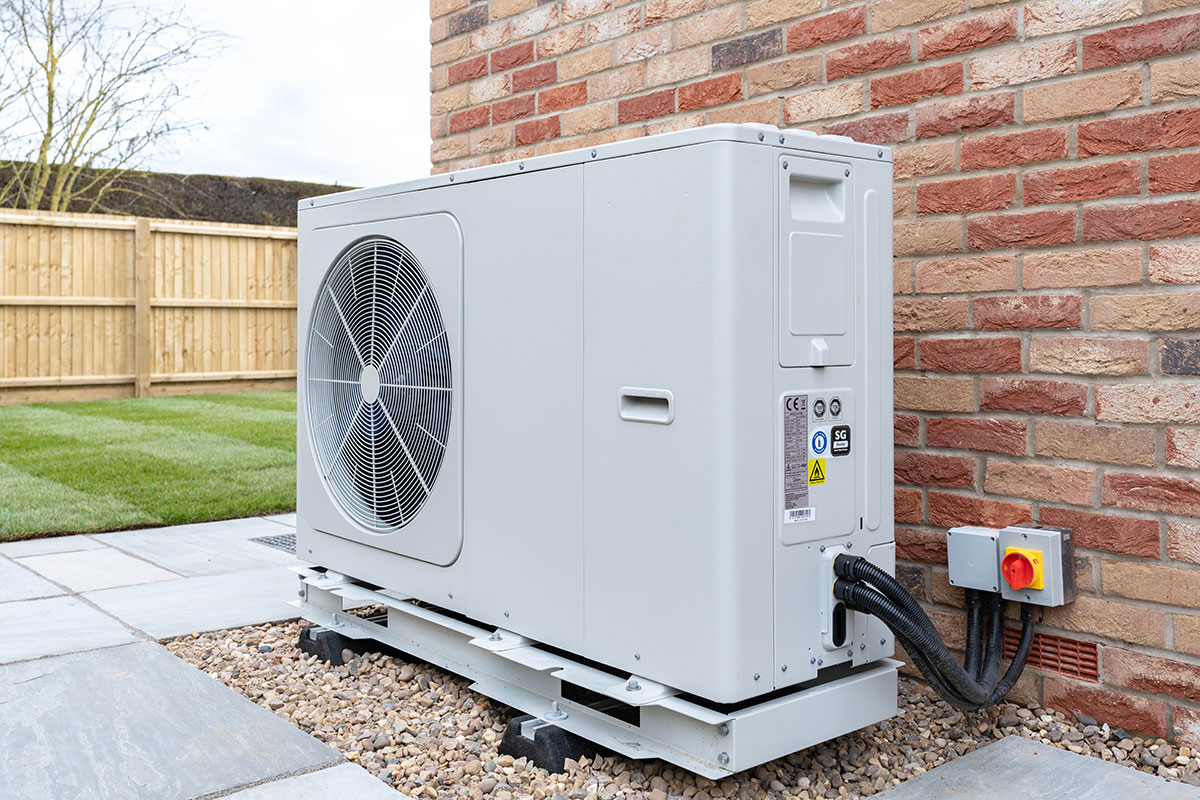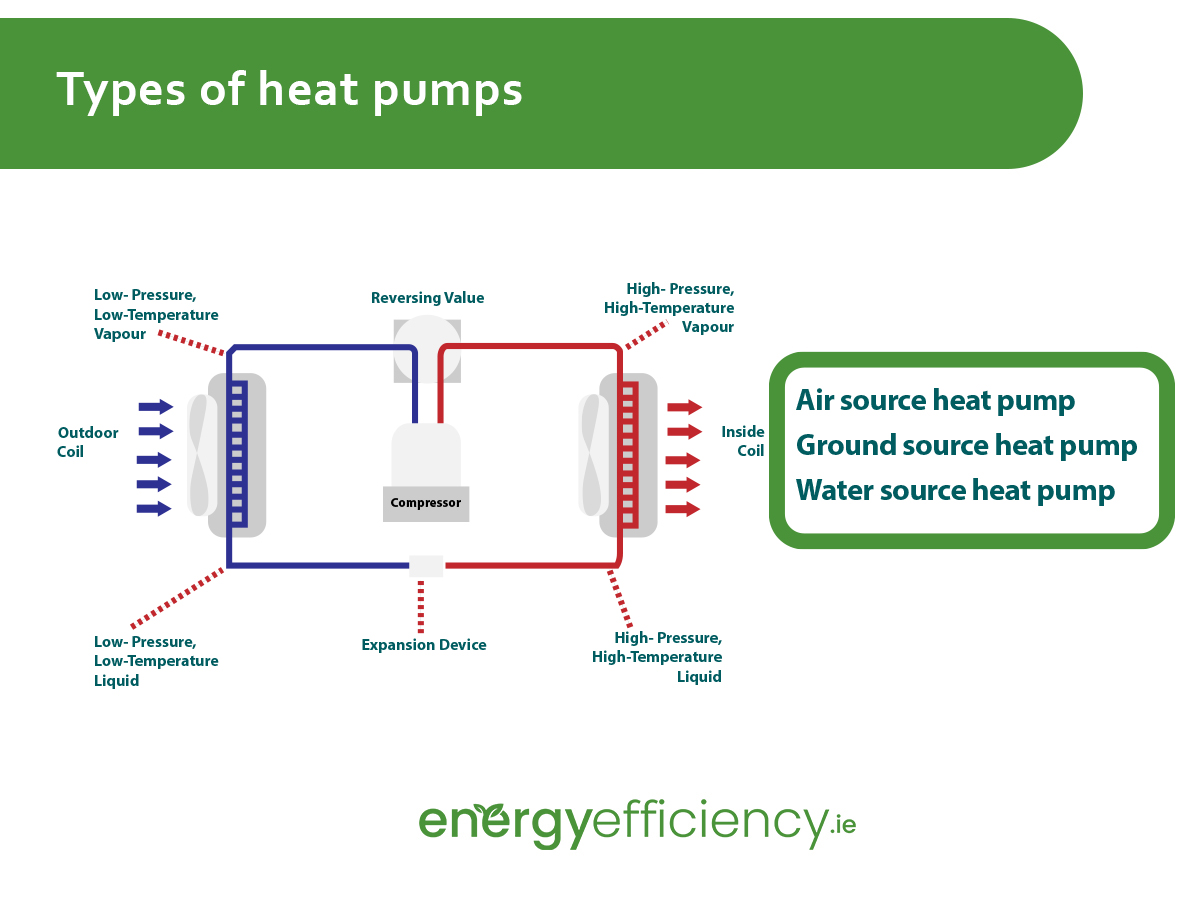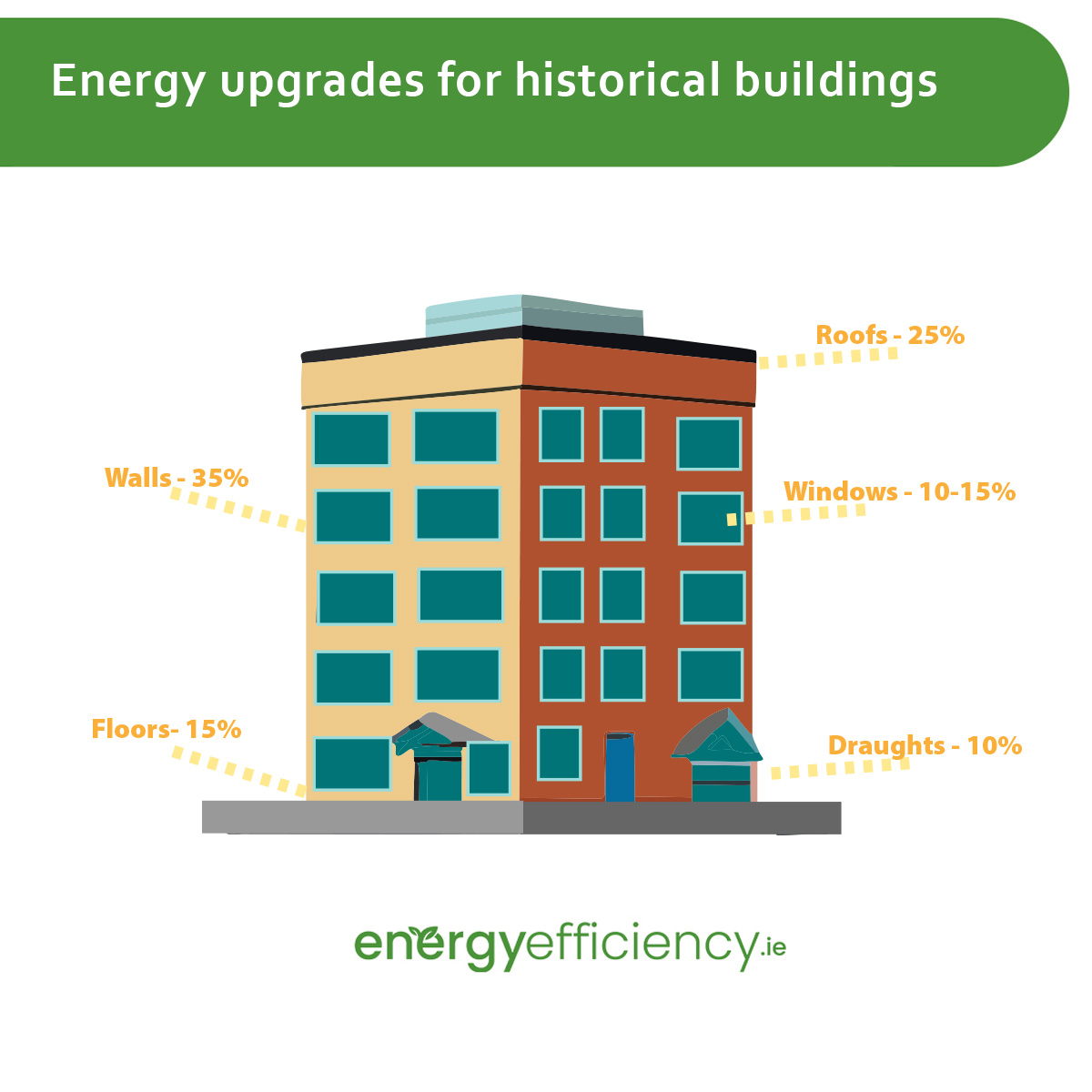Heat Pumps can be an incredible way to improve the energy efficiency of your home, saving money on bills and reducing your carbon footprint.
However, before looking to have one installed anyone with an existing home must ask themselves if it’s suitable for a heat pump as it is. If not, what improvements can be carried out to make it ready for one?
This issue typically doesn’t arise for new homes, as the majority will come installed with heat pumps.
Even if a new home does not come with a heat pump, since 2019 new buildings have been required to typically have a BER of A2 at least. With modern insulation installed from the get-go, there shouldn’t be any question of whether they are fit for a heat pump.
However, with older buildings, even those built in the Celtic Tiger, there could be plenty of property upgrades which need doing in order to bring them up to standard.

Table of Content
Property Heat Loss
This is perhaps the most important part of determining whether or not your home is suitable for a heat pump system.
Most heat Pumps operate at a lower temperature than boilers, with a typical top operating flow temperature of 55℃. However, they are at their most efficient when operating in the range of 35-40℃.
Relying on this constant flow of low level heat makes them more susceptible to heat loss from a poorly insulated home. If your home is leaking like a sieve, a heat pump won’t be able to keep it warm.
What Should I Do Before Installing a Heat Pump
For homeowners who live in an older building, there are multiple upgrades which can be carried out first to make your home heat pump ready.
Which of these is necessary will depend on the specifics of individual homes. A house may have attic insulation, but no cavity wall insulation. Or the insulation in place could be older, and not up to current standards.
The thermal transmittance of an area such as a wall, floor, or ceiling is expressed as its U-value. This is the rate at which heat passes through that structure when the unit temperature difference is maintained between the ambient air temperatures on each side.
The lower the U-value, the better the thermal performance of the structure in question.
The SEAI has set guidelines for what U-values buildings should achieve for different areas after the installation of new insulation.
| Insulation Type | Require U-Value (W/m²K) |
| Attic Insulation | 0.16 W/m²K |
| Rafter Insulation | 0.20 W/m²K |
| Cavity Wall Insulation | 0.27 W/m²K |
| External Wall Insulation | 0.27 W/m²K |
| Internal Wall Insulation | 0.27 W/m²K |
If they are not already present, then insulation should be installed on water pipes and the domestic hot water tank which make up the central heating and water supply systems as well to prevent heat loss there.
Home Heating Systems
Another area of a home which is relevant to whether a heat pump would work is the heating system currently in place.
A home with traditional radiators which are designed to work with water flow temperatures of 60-80℃ might not be suitable for many heat pump systems. In this case, it would be an option to install a high-temperature heat pump model. While more expensive, these are still far more efficient than fossil fuel boilers.
Another option would be to replace the radiators as part of any renovations to the property. If replacing the floor to install insulation, this would also be an ideal time to think about getting underfloor heating.
More modern homes with larger radiators or underfloor heating systems are already well suited to all heat pump models.
What Type of Heat Pump Should You consider?
The type of property and surrounding area you have will also affect what sort of heat pump is available to you, and best suited to your needs.

Air Source Heat Pump
Air Source Heat Pumps, whether air to air or the more popular air to water option are the most common type of heat pump in Ireland.
The only space requirement is room for the outdoor unit which can be placed in an outdoor yard, or close to the wall of the building.
Using an air to air heat pump is also an option if you have older radiators which would not be suited to an air to water system and don’t want the expense of upgrading.
Ground Source Heat Pump
A house with a larger amount of open space such as a back garden could be well suited to a ground source heat pump. These are less popular due to their higher cost and the need for a lot of ground if installing an open loop system.
However, they pay that back with a higher efficiency level than air source heat pumps as they are less affected by changes in the air temperature.
Water Source Heat Pump
Water source heat pumps can be more expensive but are also a highly efficient option for people who live near an open water source, or who can access groundwater via a borehole.
Requirements if Carrying out Renovations
We’ve mentioned above that there are basic targets which people should set out to hit if installing insulation in their homes.
Meeting those requirements can be dependent on the quality and thickness of the insulation installed. This along with new doors and windows could potentially be cost prohibitive.
One thing which must be kept in mind if carrying out home energy efficiency upgrades before getting a heat pump installed is that once you start altering the fabric of the building there are thermal efficiency requirements which must be met.
Building Regulations also determine what U-values are permitted whenever an extension or material alteration to the fabric of an existing home.
| Building Element | Highest Average U-value Permitted |
| Pitched Roof (Rafters) | 0.25 W/m²K |
| Pitched Roof (Attic) | 0.16 W/m²K |
| Flat Roof | 0.25 W/m²K |
| Ground Floor | 0.45 W/m²K |
| Ground Floor (Underfloor Heating) | 0.15 W/m²K |
| Other Exposed Floors | 0.25 W/m²K |
| Cavity Wall | 0.55 W/m²K |
| Other Walls | 0.35 W/m²K |
| External Doors, Windows, Rooflights | 1.4 W/m²K |
These are the maximum U-Values permitted when renovations have been carried out to any of these elements, and ideally, you should be exceeding them.
There are also exceptions to these rules. The Cavity Wall U-Value only applies if it is suitable for cavity wall insulation.
Major Renovations
A project becomes a Major Renovation under building regulations if more than 25% of the building surface undergoes renovations.
Buildings undergoing major renovations must reach a Cost Optimal level of thermal performance of less than 125 kWh/m2/yr (B2 BER) when calculated using the DEAP methodology.
This is an expression of the primary energy usage per unit of floor area per year.
Heat Pump Grants
The SEAI has its own set of requirements for homes to meet before being eligible for heat pump grants.
Up to €6,500 is available to help homeowners with the cost of installing a heat pump, but if your home was built prior to 2007 it must first undergo a Technical Assessment.
This assessment will measure the Heat Loss Indicator (HLI) of your home, which is a measurement of the total heat loss per m² of the property.
𝐻𝐿𝐼 = 𝐹𝑎𝑏𝑟𝑖𝑐 𝐻𝑒𝑎𝑡 𝐿𝑜𝑠𝑠 + 𝑉𝑒𝑛𝑡𝑖𝑙𝑎𝑡𝑖𝑜𝑛 𝐻𝑒𝑎𝑡 𝐿𝑜𝑠𝑠 𝐹𝑙𝑜𝑜𝑟 𝑎𝑟𝑒𝑎 𝑜𝑓 𝑑𝑤𝑒𝑙𝑙𝑖𝑛𝑔 [ 𝑊/𝐾 ∙ 𝑚2 ]
In order to qualify for the grant your home must have an HLI of 2 or less. 𝐻𝐿𝐼 ≤ 2 𝑊/𝐾 𝑚2
If you do not meet this standard, the assessment will recommend upgrades which can be carried out to meet the standard.
If these are not cost feasible to carry out, then an HLI of ≤ 2.3 𝑊/𝐾 𝑚2 can be accepted if other qualifications are met.
Conservation of Historic Buildings
Issues can arise if the property in question is a Protected Structure or located in an Architectural Conservation Area. These are likely to be older buildings which have poor thermal performance.
Traditional buildings which make up the core of most towns and cities were often built prior to 1940. They will typically have solid masonry walls, single glazed windows, and timber framed roofs.
Census data shows that such buildings could comprise as much as 18% of Ireland’s housing stock. The biggest areas of heat loss in traditional buildings are:
It’s not impossible to carry out renovations on these buildings, but such works are always assessed for their material and visual impact on the structure.
This can cause issues if someone wants to carry out the kind of renovations which would bring them up to a standard where a heat pump would be usable.
Government guidance on retrofitting traditional buildings outlines how work such as insulation should be done without negatively affecting the original fabric.
If working with a protected building or within an ACA it would be advisable to consult with your local authority on how work should be carried out.

Get a quote for your homes heat pump
Speak to Energy Efficiency today to get a quote for your home’s heat pump system. Find out which heat pump system is best for your home and start saving money today.
Energy Efficiency is Ireland’s leading provider of home energy information. We will find the best quotes on the market for all things home energy.



